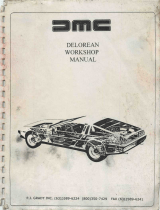
17
APPLICATIONS & WARNINGS
This application/warning information apply to Crosby products only.
LIFTING POINTS
SECTION 11
Copyright © 2022 The Crosby Group LLC All Rights Reserved 419
WARNING
• Load may slip or fall if proper Hoist Ring
assembly and lifting procedures are not used.
• A falling load can seriously injure or kill.
• Do not use with damaged slings or chain. For
inspection criteria see ASME B30.9.
• Never apply load except in line with the pivot
direction.
• Use only genuine Crosby bolts as
replacements.
• Read and understand these warnings and
application instructions.
WRONG WRONG
Figure 1 Figure 2 Figure 3 Figure 4
RIGHT
External Inspection
Points 180˚ PIVOT
HR-100
CROSBY® PIVOT HOIST RING
WARNINGS & APPLICATION INSTRUCTIONS
Pivot Hoist Ring Inspection / Maintenance
• Always inspect pivot hoist ring before use.
• Regularly inspect pivot hoist ring parts (Figure 3).
• Never use pivot hoist ring that shows signs of corrosion, wear or
damage.
• Never use pivot hoist ring if bail is bent or elongated.
• Do not use parts showing cracks, nicks or gouges.
• Always be sure threads on bolts and receiving holes are clean, not
damaged or worn, and fit properly.
• Always check with torque wrench before using an already installed
pivot hoist ring.
• Always make sure there are no spacers (washers) used between
pivot hoist ring body and the workpiece surface. Remove any
spacers (washers) and retorque before use.
• Always ensure free movement of the bail. The bail should pivot 180
degrees (Figure 4).
• Always be sure total workpiece surface is in contact with the pivot
hoist ring body mating surface. Drilled and tapped holes must be
90 degrees to load (workpiece) surface.
• Always make sure that the load is applied in the direction of pivot.
Pivot Hoist Ring
Application / Assembly Instructions
• Use pivot hoist ring only with ferrous metal (steel, iron) workpiece.
Do not leave threaded end of hoist ring in aluminium for long
periods of time due to corrosion.
• After determining the loads on each pivot hoist ring, select the
proper size using the Working Load Limit (WLL) ratings in Table 1
for UNC threads.
• Drill and tap the workpiece to the correct size to a minimum depth
of one-half the threaded bolt diameter plus the effective thread
projection length (see Table 1, on next page). To select proper bolt
and thread sizes see Table 1 on next page.
• Install the pivot hoist ring to recommended torque with a
torque wrench making sure the pivot hoist ring body meets the
load (workpiece) surface. See rated load limit and bolt torque
requirements imprinted on top of the pivot hoist ring body (see
Table 1, on next page).
• Never use spacers between the pivot hoist ring body and
workpiece surface.
• Always select proper load rated lifting device for use with pivot hoist
ring.
• Attach lifting device ensuring free fit to pivot hoist ring bail (lifting
ring) (Figure 1).
• Apply partial load and check proper pivot. Ensure load alignment is
in the direction of pivot (Figure 4). There should be no interference
between load (workpiece) and pivot hoist ring bail (Figure 2).





